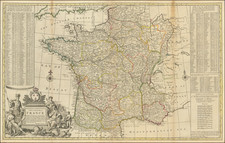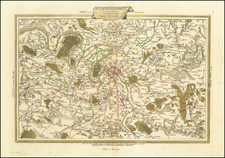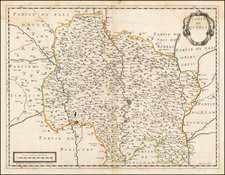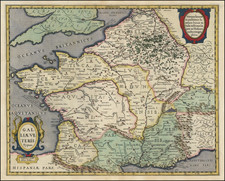Detailed map of the Battle of St .Cast, fought in 1758, from Heiden's Americanische urquelle derer innerlichen kriege des bedrängten Teutschlands.
The Battle of Saint Cast was a military engagement during the Seven Years War fought on the French coast between British Naval and Land expeditionary forces and French coastal defence forces.
Britain mounted numerous amphibious expeditions against France and French possessions around the world. In 1758 a number of expeditions, then called ''Descents'', were made against the northern coast of France. The military objectives of the descents were to capture and destroy French ports, divert French land forces from Germany, suppress privateers and spread panic and confusion in France. The battle of Saint Cast was the final engagement of a descent in force that ended in disaster for the British.
Britain's naval forces were under the command of Admiral Lord Anson, seconded by Commodore Howe. Britain's land forces were commanded by Lieutenant-General Thomas Bligh. Initially the expedition met with considerable success capturing the port of Cherbourg. The British destroyed the port, the docks and the ships harbored there, carrying off or destroying considerable war material and goods. French troops from various places began moving on Cherbourg and the British expedition re-embarked to move against Saint Malo on September 5, 1758, but it was found to be too well defended.
The weather now turned against the British as well and it was decided it would be safer to re-embark the land forces further west in the bay of Saint Cast near the small village of Saint Cast and the towns of Saint Guildo and Matignon. The fleet sailed ahead while the army marched overland on September 7, engaging in skirmishes on the 7th, 8th and 9th. On September 10, the Coldstream Guards were sent ahead to Saint Cast to collect provisions and convoy them back to the army. Lieutenant-General Bligh with the army camped at Matignon some 3 miles from Saint Cast.
During this time Richelieu, duc d'Aiguillon, military commander of Brittany, had gathered 12 regular line infantry battalions, including the Regiments of Royal Vaisseaux, Voluntaire Étranger, Bourbon, Bresse, Quercy, Penthièvre and Marmande, from the garrison of Saint Malo a brigade of the Regiments of Fontenay-le-Comte, Brie and Boulonnais; six squadrons of cavalry, some companies of costal militia, and several artillery batteries. The French army amounting to 8,000 or 9,000 men, under the field command of Marquis d'Aubigné, was fast marching on Saint Cast from Brest by way of the town of Lamballe and from the town of Dinan.
Bligh broke camp by 3 am of the 11th and reached the beach at Saint Cast before 9 am but the embarkation went very slowly. Hardly any soldiers had embarked when the French appeared and began a cannonade of the beach. Bligh had formed the 1st Foot Guards and the grenadier companies of the line regiments into a rear guard of about 1500 men under the command of the Guards Brigade commander, Major-General Dury, to cover the withdrawal of the army from behind some dunes along the beach. A great deal of confusion and panic set in among the British in the hurry to get off the beach.
The French forces moved down a covered way to the beach and deployed three brigades into line with a fourth in reserve. The five frigates and the bomb ketches tried to cover the British embarkation and their fire disordered and drove back the French line for a while. The French artillery batteries were well positioned on higher ground commanding the beach and the bay. They exchanged shots with the ships of the fleet, sank three landing boats full of soldiers, other landing boats were damaged on the beach.
When the British troops remaining ashore were some 3,000, the French closed in. Under fire from the British fleet, the French advanced against the final British position led by a battalion of 300 men of combined grenadier companies in a bayonet charge commanded by the Marquis de Cussi and Comte de Montaigu. The rear guard under Dury attempted a counter-attack in which he was fatally wounded and the 1st Foot Guards and line grenadiers broke and routed into the sea with 800 killed and over 700 taken prisoner. The French infantry pursued the stragglers into waist deep water until the fleet ceased fire at which point they attended to the British wounded having suffered about 300 casualties themselves.













![Gallia Narbonens [on sheet with] Savaudiae Ducat. [on sheet with] Venuxini Comitatus Descr.](https://storage.googleapis.com/raremaps/img/small/61471.jpg)
